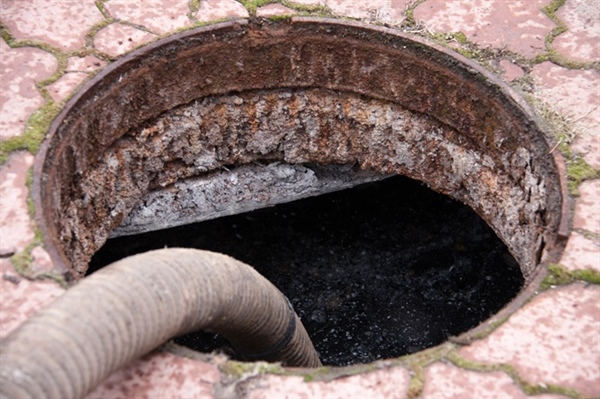How Does Trenchless Sewer Repair Minimize Environmental Impact?

From aging city pipelines to suburban mains, failing sewer lines can release pollutants and disrupt soil health. Trenchless sewer repair uses methods like cured-in-place lining and pipe bursting to rehabilitate pipes without extensive digging.
This article addresses five key questions:
What are the environmental benefits of trenchless technology?
How does trenchless repair reduce soil disruption compared to traditional methods?
In what ways does trenchless technology contribute to water conservation?
How does minimizing excavation in trenchless methods protect local ecosystems?
What are the long-term environmental advantages of using trenchless sewer repair?
Read on to explore data-driven insights, case studies, and our process for eco-friendly infrastructure renewal.
Environmental Benefits of Trenchless Technology for Sewer Renewal
Trenchless technology cuts greenhouse gas output by avoiding heavy excavation equipment.
Rehabilitating a 100-foot main with cured-in-place lining can reduce CO₂ emissions by up to 50 percent versus open-cut methods. Preserving existing asphalt and turf prevents the emissions tied to demolition and repaving.
These methods generate far less material waste. Traditional dig-and-replace can produce thousands of pounds of debris per project, while trenchless lining reuses the existing host pipe, substantially lowering landfill contributions and disposal costs.
At Advanced Trenchless Solutions we follow our process to track emissions and waste, integrating sustainable practices at every stage.
Minimizing Soil Disruption through Trenchless Sewer Repair Techniques
Open-cut repairs remove entire soil profiles in trenches often two feet wider than the pipe, disrupting soil structure and drainage.
Trenchless methods use small entry and exit pits—typically under 10 square feet—leaving surrounding soils intact and preserving microbial communities.
Maintaining natural soil stratification protects groundwater infiltration and prevents erosion. Restoring a compact pit takes hours, compared to days of backfilling a full trench, reducing sediment runoff risks into streams and storm drains.
Advanced drilling and robotic guidance let crews navigate beneath sidewalks, roads, and landscaping without uprooting trees or removing pavement, safeguarding urban green spaces.
Water Conservation Benefits of Trenchless Sewer Repair
Cracked joints and pipe defects admit groundwater into sewer networks, wasting millions of gallons and overloading treatment plants. Trenchless lining seals leaks at their source, restoring pipe integrity and cutting infiltration, which lowers treatment energy use.
These methods block root intrusion that leads to frequent flushes consuming clean water. By preventing root entry, maintenance flushes drop by as much as 70 percent, conserving potable water in distribution systems.
Sealed pipes also stop untreated sewage from reaching aquifers and surface waters, all without large-scale excavation that can stir up sediments and pollutants.
Protecting Local Ecosystems by Reducing Excavation
Deep trenching disturbs wildlife habitats, fragments green corridors, and uproots vegetation. Trenchless repair confines disturbance to small pits, preserving plant root zones and animal pathways and maintaining biodiversity.
In waterways, open-cut repairs often require stream diversion or damming, harming fish and macroinvertebrates. Trenchless lining under streams leaves beds intact, safeguarding riparian zones and aquatic life.
Lower noise, dust, and vibration from reduced truck traffic benefit urban fauna, helping birds and small mammals coexist with essential maintenance work.
Long-Term Environmental Advantages of Trenchless Sewer Rehabilitation
Studies show trenchless repairs can extend pipeline service life by 50 years or more, cutting the frequency of disruptive replacements. Longer asset life reduces the aggregate environmental impact of repeated excavation and material use.
By preserving underground utiliti\es and avoiding repeated cuts in roadways, trenchless methods lower the carbon footprint of municipal maintenance programs and reduce urban heat island effects tied to asphalt removal.
Fewer car0bon-intensive backfill materials and pavement overlays translate into lasting environmental gains. To explore tailored solutions, contact Advanced Trenchless Solutions.
Partner with Advanced Trenchless Solutions for Sustainable Sewer Infrastructure
Advanced Trenchless Solutions delivers trenchless sewer repair services that drive lasting environmental benefits. Our precision pipe lining and pipe bursting techniques minimize site disturbance, protect water quality, and preserve soil health. Whether you’re upgrading urban mains or safeguarding sensitive habitats, our proven methods ensure sustainable outcomes.
Ready to reduce costs, shorten project timelines, and safeguard your environment? Call us at 844.513.4106 or visit us at 1138 6th Street South, Wisconsin Rapids, WI 54494. Learn more or contact us to schedule a consultation.